A brief history of locomotive
The beginning of the beginning...
The locomotive is a vehicle which use diesel or electrical energy to haul a train. It has an internal motorization allowing it to move. The fuels used were marked by three periods of use:
- 1820 to +/- 1960-1970: steam engine with coal;
- early 1900 to the present day: traction engine with electricity-powered motors;
- 1912 to the present day: traction engine with alternator or hydraulic transmission, running by diesel fuel.
The cost of coal mining, the low power supplied and the very expensive maintenance meant that the last steam locomotives ran globally until the middle of the 1970s, in many European countries until end of 1960s. At the beginning of the 1960s, a few were still being built for local railways. This period of 150 years of steam locomotive therefore deserves a short retrospective, before we look in the following pages at diesel and then electric traction.
The locomotive is a vehicle which use diesel or electrical energy to haul a train. It has an internal motorization allowing it to move. The fuels used were marked by three periods of use:
- 1820 to +/- 1960-1970: steam engine with coal;
- early 1900 to the present day: traction engine with electricity-powered motors;
- 1912 to the present day: traction engine with alternator or hydraulic transmission, running by diesel fuel.
The cost of coal mining, the low power supplied and the very expensive maintenance meant that the last steam locomotives ran globally until the middle of the 1970s, in many European countries until end of 1960s. At the beginning of the 1960s, a few were still being built for local railways. This period of 150 years of steam locomotive therefore deserves a short retrospective, before we look in the following pages at diesel and then electric traction.
News Mediarail.be
The author:
Frédéric de Kemmeter
Railway signalling systems. I'm a rail observer for over 30 years. How has the railway evolved over the decades? Which futur for railways? That's what I'm analyzing and explaining.
Railway signalling systems. I'm a rail observer for over 30 years. How has the railway evolved over the decades? Which futur for railways? That's what I'm analyzing and explaining.

See also:
• My photos on Piwigo gallery
• My YouTube channel
• My blog with latest news
• Follow me on Twitter and LinkedIn
• My photos on Piwigo gallery
• My YouTube channel
• My blog with latest news
• Follow me on Twitter and LinkedIn
Diesel locomotives
Electric locomotives

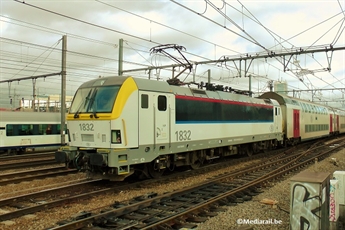
- history of diesel locomotives
- principles of diesel locomotives
- diesel locomotives today
- bimodes locomotives
- manufacturers
- leasers
- principles of diesel locomotives
- diesel locomotives today
- bimodes locomotives
- manufacturers
- leasers
- three technologies of electric railway traction
- principles of electric locomotives
- electric locomotives today
- bimodes locomotives
- manufacturers
- leasers
- principles of electric locomotives
- electric locomotives today
- bimodes locomotives
- manufacturers
- leasers
But before developing today's railway traction, a little step back in time is necessary, with the steam railway traction during 150 years. We can tell a brief overview of this period, from the invention of steam to move a machine, to the locomotive that runs autonomously.
The beginnings of steam mechanics
Towards railway application
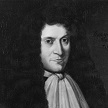
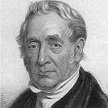
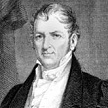

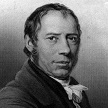
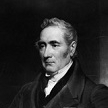
Papin
Newcomen
Cugnot
Murdoch
Trevithick
Stephenson
Until the 17th century, the only way to get around was only possible by natural, animal or human energy: either by wind, hydraulic power, or by the horse pulling a vehicle, or...by walking. This was the case with sailing boats, windmills or water-wheel mills, and the many services in horse-drawn carriages. Mechanical engineering takes off with the idea of mastering the energy to move a vehicle. If the wind could not be controlled, a fuel was needed to produce energy. This started with steam, then electricity and finally fossil fuels.
Why only in the 17th century?
From the Middle Ages to the Renaissance, clerics and humanists stuck to the description of phenomena. The relationship between science and religion were definitively broken with, in 1633, the trial of Galileo. Scientists, following Johannes Kepler, will be able to separate science, religion and philosophy, and engage in a large number of research in full autonomy, in mathematics, physics, astrology. Physics is interested in the conditions necessary to generate a pressing force capable of moving an object other than by wind, hydraulic energy, animal power or... by cannon (invented by a German in 1313)!
In 1673, the Dutchman Christiaan Huygens and his young assistant Denis Papin, succeeded in moving a piston carrying a load of 70 kg by 30 cm, by heating a metal cylinder filled with gunpowder and emptied of air. Huygens would thus be considered as the precursor of the internal combustion engine. In 1690, Denis Papin took up the idea again but by using water steam rather than gunpowder, and built the first very basic machine operating under atmospheric pressure. In 1698, the English mechanical engineer Thomas Savery filed a patent on a pump for mining, running on steam, directly inspired by works of Edward Somerset: it would be the first steam engine that really worked, but it is obviously a static machine.
Newcomen's great achievement was his steam engine, developed around 1711. Combining the ideas of Thomas Savery and Denis Papin, he created a steam engine for the purpose of lifting water out of a tin mine. This first recorded Newcomen engine was erected near Dudley Castle, Staffordshire. Newcomen invented the internal-condensing jet for obtaining a vacuum in the cylinder and an automatic valve gear. By using steam at atmospheric pressure, he kept within the working limits of his materials.
Why only in the 17th century?
From the Middle Ages to the Renaissance, clerics and humanists stuck to the description of phenomena. The relationship between science and religion were definitively broken with, in 1633, the trial of Galileo. Scientists, following Johannes Kepler, will be able to separate science, religion and philosophy, and engage in a large number of research in full autonomy, in mathematics, physics, astrology. Physics is interested in the conditions necessary to generate a pressing force capable of moving an object other than by wind, hydraulic energy, animal power or... by cannon (invented by a German in 1313)!
In 1673, the Dutchman Christiaan Huygens and his young assistant Denis Papin, succeeded in moving a piston carrying a load of 70 kg by 30 cm, by heating a metal cylinder filled with gunpowder and emptied of air. Huygens would thus be considered as the precursor of the internal combustion engine. In 1690, Denis Papin took up the idea again but by using water steam rather than gunpowder, and built the first very basic machine operating under atmospheric pressure. In 1698, the English mechanical engineer Thomas Savery filed a patent on a pump for mining, running on steam, directly inspired by works of Edward Somerset: it would be the first steam engine that really worked, but it is obviously a static machine.
Newcomen's great achievement was his steam engine, developed around 1711. Combining the ideas of Thomas Savery and Denis Papin, he created a steam engine for the purpose of lifting water out of a tin mine. This first recorded Newcomen engine was erected near Dudley Castle, Staffordshire. Newcomen invented the internal-condensing jet for obtaining a vacuum in the cylinder and an automatic valve gear. By using steam at atmospheric pressure, he kept within the working limits of his materials.
Technically, James Watt's process could propel both pumps and wheeled machines, but the system focused on low pressure. Cugnot's fardier, on the other hand, had the disadvantage of producing steam only for a short period of time. At the end of the 18th century, James Watt's mechanic, William Murdoch, surveyed the Cornish mines as senior engineer, responsible for the installation, maintenance and repair of the Boulton and Watt machines. During his various maintenance sessions, the frequent problems with Watt's machines led him to perfect them. In 1784, a few years after Cugnot, he invented a steam car. The mechanics of this model incorporated a number of innovations, such as a boiler with a safety valve, having the cylinder partially immersed in the boiler and using a new valve system. Murdoch's method was based on the concept of high pressure steam. Despite of this, James Watt decided that there was no future for such machines! Without the support of his bosses, Murdoch would be forgotten...
There was also a mining engineer named Richard Trevithick, who also worked in Cornwall, in the Ding Dong mine at Penzance. He reintroduced the use of high pressure steam by modifying James Watt's machines to avoid paying him royalties for the patent on the separate condenser. In 1800 he built a complete high pressure machine that was more powerful and more economical than Watt's. This invention quickly became very popular in Cornwall's mines and Trevithick turned to the creation of a steam car. In 1801, he presented the first British road vehicle, called the London Steam Carriage, equipped with three wheels, capable of carrying 9 passengers and propelled by steam. It travelled 10 miles through the streets of London, but fundamental problems with steering, suspension and road conditions caused the "road" car to be neglected.
Trevithick therefore needed a smooth surface, which only industrial trams or railways could provide. At this time, industries used wagons which were operated either by gravity, rope or horse-drawn wagons. These railways were privately owned and provided an ideal environment to test a new form of traction. The Coalbrookdale foundry was the ideal place to build and test a first railway locomotive. This foundry produced the boiler and parts for Trevithick's high pressure steam engine. Another upgrade was that it was probably the first railway to be equipped with melting railroad tracks, replaced the wood. In 1802, Trevithick tried a very first locomotive which quickly crashed and had to be transformed into a stationary machine. It was on the Merthyr Tramroad that Trevithick experimented with a second locomotive: the "Pen-y-Darren" towing a first train of wagons with 10 tons of ore. The date is February 21, 1804.
There was also a mining engineer named Richard Trevithick, who also worked in Cornwall, in the Ding Dong mine at Penzance. He reintroduced the use of high pressure steam by modifying James Watt's machines to avoid paying him royalties for the patent on the separate condenser. In 1800 he built a complete high pressure machine that was more powerful and more economical than Watt's. This invention quickly became very popular in Cornwall's mines and Trevithick turned to the creation of a steam car. In 1801, he presented the first British road vehicle, called the London Steam Carriage, equipped with three wheels, capable of carrying 9 passengers and propelled by steam. It travelled 10 miles through the streets of London, but fundamental problems with steering, suspension and road conditions caused the "road" car to be neglected.
Trevithick therefore needed a smooth surface, which only industrial trams or railways could provide. At this time, industries used wagons which were operated either by gravity, rope or horse-drawn wagons. These railways were privately owned and provided an ideal environment to test a new form of traction. The Coalbrookdale foundry was the ideal place to build and test a first railway locomotive. This foundry produced the boiler and parts for Trevithick's high pressure steam engine. Another upgrade was that it was probably the first railway to be equipped with melting railroad tracks, replaced the wood. In 1802, Trevithick tried a very first locomotive which quickly crashed and had to be transformed into a stationary machine. It was on the Merthyr Tramroad that Trevithick experimented with a second locomotive: the "Pen-y-Darren" towing a first train of wagons with 10 tons of ore. The date is February 21, 1804.
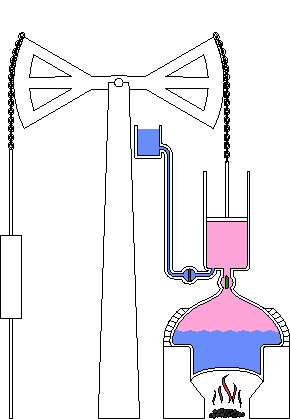

Newcomen machine (by Emoscopes via wikipedia licence CC BY 2.5)
A model of « Pen-y-Darren » of Trévithick at Swansea Maritime Museum (photo Hugh Llewelyn via wikipedia CC BY 2.5)
In the middle of the 18th century, there were already probably hundred Newcomen machines in England. Another engineer, the Scottish James Watt, working as an instrument maker at the University of Glasgow, became interested in the technology of steam engines. While repairing a model Newcomen steam engine in 1764, Watt was impressed by its waste of steam. In May 1765, after wrestling with the problem of improving it, he suddenly came upon a solution - the separate condenser, his first and greatest invention.
This story shows the importance of technological discoveries and the upheavals they have produce. Watt's machines, though imperfect, radically transformed the smelting industry and mining, and turned the metal and coal sectors from a cottage industry to an industrial sector. The first industrial revolution was born in UK...
This story shows the importance of technological discoveries and the upheavals they have produce. Watt's machines, though imperfect, radically transformed the smelting industry and mining, and turned the metal and coal sectors from a cottage industry to an industrial sector. The first industrial revolution was born in UK...
In 1808, Trevithick, who seemed to want to abandon his plans for locomotives, ran one exemplar in London on a circular circuit near Euston.
In 1813, George Stephenson, superintendent engineer at the Killingworth Colliery mine, persuaded Lord Ravensworth that coal mining would benefit greatly from the use of steam locomotives, and in 1814 he was allowed to build his first locomotive. The locomotive was tested on the Colliery Railway Killingworth on 27th July 1814 on a 1:450 grade section, pulling eight loaded cars of about 30 tons at a speed of four miles per hour. It was the first locomotive to use smooth flanged wheels on Jessop rails, demonstrating that grip can be sufficient using this method. In 1820, John Birkinshaw filed a patent for the creation of the first wrought iron rails that George Stephenson would take over in 1821 for his project of a line between Stockton and Darlington.
The goal at this time was clear: to demonstrate the uselessness of horses and the weight savings of trains pulled by a locomotive. This was a great revolution for the mining industry. Stephenson demonstrated this in November 1822, again in a mine, where a crowd of people witnessed locomotives pulling 17 loaded cars, averaging sixty-four tons, at four miles per hour.
Stephenson heard of Edward Pease's plan to build a 12.9 km line from Stockton to Darlington to exploit a rich seam of coal. He persuades Pease that a steam engine could pull 50 times the load that horses could pull on iron rails. Impressed, Pease agreed to order two locomotives for £600 each from the Robert Stephenson & Co. company. These locomotives were based on the principles previously tried and tested at the Killingworth mine. But contrary his predecessors, Stephenson had plans to transport passengers, and not only ore.
Named Locomotion, the locomotive weighed 6.25 tons empty and 7.75 tons loaded. Locomotion was the first locomotive delivered to the railroad in September 1825, which hauled its first passenger train on September 27, 1825. Three other locomotives of this design followed: Hope in November 1825, Black Diamond in April 1826 and Diligence in May 1826. The railroad and the locomotive offer us a new form of transportation: the railway. This new disruptive technology will durably upset the face of the Europe, and then the world...
In 1813, George Stephenson, superintendent engineer at the Killingworth Colliery mine, persuaded Lord Ravensworth that coal mining would benefit greatly from the use of steam locomotives, and in 1814 he was allowed to build his first locomotive. The locomotive was tested on the Colliery Railway Killingworth on 27th July 1814 on a 1:450 grade section, pulling eight loaded cars of about 30 tons at a speed of four miles per hour. It was the first locomotive to use smooth flanged wheels on Jessop rails, demonstrating that grip can be sufficient using this method. In 1820, John Birkinshaw filed a patent for the creation of the first wrought iron rails that George Stephenson would take over in 1821 for his project of a line between Stockton and Darlington.
The goal at this time was clear: to demonstrate the uselessness of horses and the weight savings of trains pulled by a locomotive. This was a great revolution for the mining industry. Stephenson demonstrated this in November 1822, again in a mine, where a crowd of people witnessed locomotives pulling 17 loaded cars, averaging sixty-four tons, at four miles per hour.
Stephenson heard of Edward Pease's plan to build a 12.9 km line from Stockton to Darlington to exploit a rich seam of coal. He persuades Pease that a steam engine could pull 50 times the load that horses could pull on iron rails. Impressed, Pease agreed to order two locomotives for £600 each from the Robert Stephenson & Co. company. These locomotives were based on the principles previously tried and tested at the Killingworth mine. But contrary his predecessors, Stephenson had plans to transport passengers, and not only ore.
Named Locomotion, the locomotive weighed 6.25 tons empty and 7.75 tons loaded. Locomotion was the first locomotive delivered to the railroad in September 1825, which hauled its first passenger train on September 27, 1825. Three other locomotives of this design followed: Hope in November 1825, Black Diamond in April 1826 and Diligence in May 1826. The railroad and the locomotive offer us a new form of transportation: the railway. This new disruptive technology will durably upset the face of the Europe, and then the world...

French Army Captain Nicolas Joseph Cugnot was one of the first to successfully employ a device for converting the reciprocating motion of a steam piston into a rotary motion by means of a ratchet arrangement. Cugnot thought of a solution to replace the horse-drawn carriage from army. In 1763, he retired from the army and built the fardier à vapeur ("steam dray"), specified to be able to carry four tons and cover two lieues (7.8 km or 4.8 miles) in one hour, a performance it never achieved in practice. The vehicle weighed about 2.5 tonnes tare. After running a small number of trials, variously described as being between Paris and Vincennes and at Meudon, the project was abandoned. We can say that Cugnot's fardier was the first true self-propelled, horse-free land vehicle.
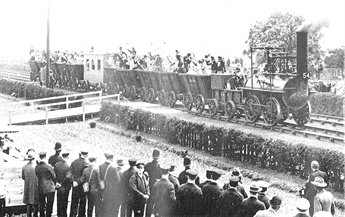
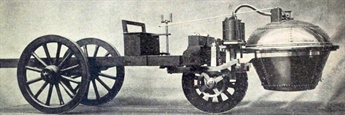
The second fardier of Cugnot in 1901 in the Musée des Arts et Métiers in Paris, France (wikipedia)
>>> To read: The fundamentals of railway today








-WEc780af7f81.png)


